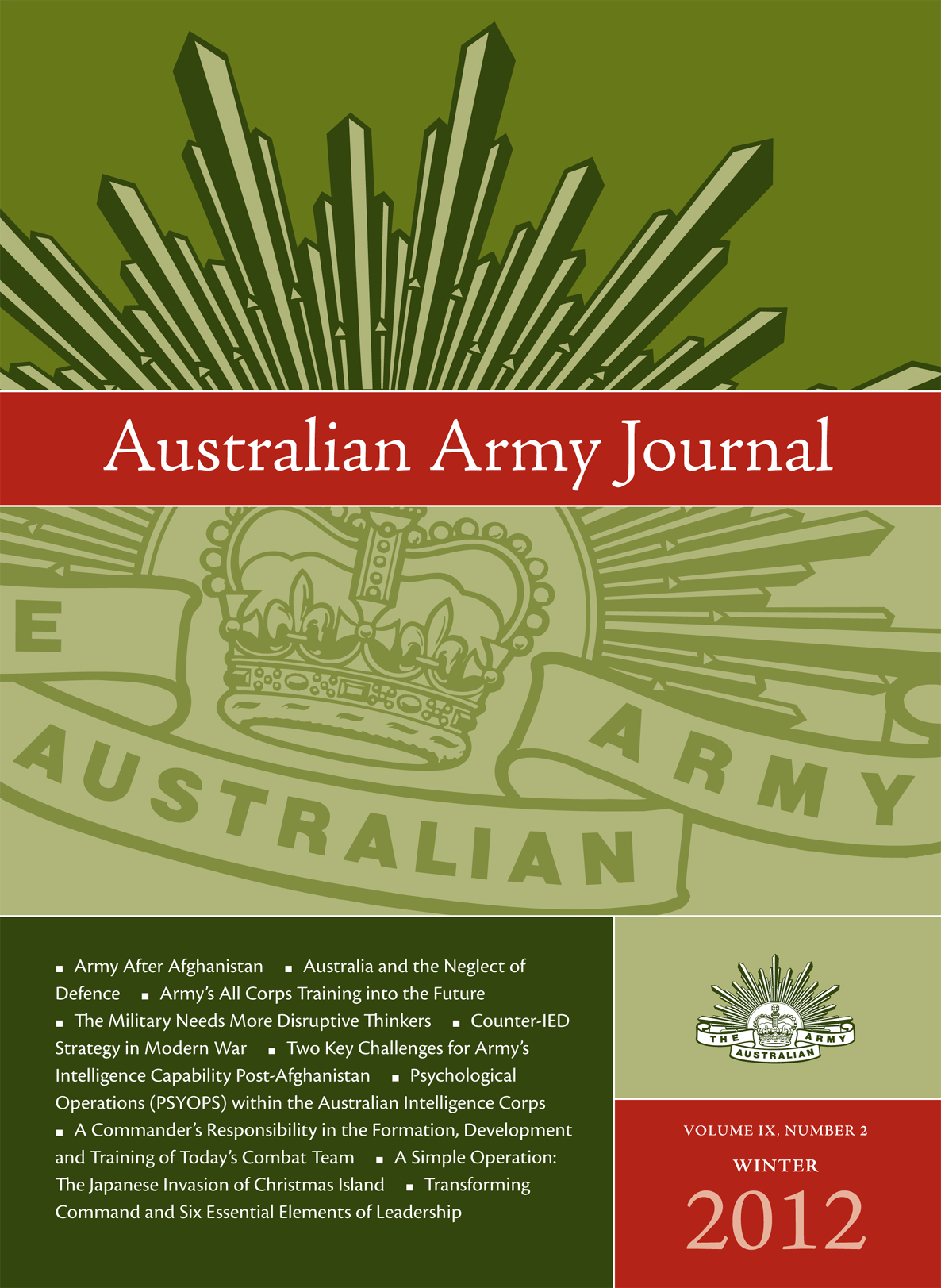Editorial
I write this while attending the Pacific Armies Management Seminar in Canberra, which has once again highlighted the need for close cooperation amongst allies within the region. But it has also served as a way of elucidating thoughts on regional states on the role of land forces in what some have called the Asian Century. In light of the US pivot towards Asia, as well as the straitened economic circumstances that many militaries are facing, it is more important than ever that armies articulate their role in the future regional security environment. Seminars like the one I am attending is one way of doing that, and constructing arguments regarding the way in which Army is able to adapt to these circumstances is another. Professional journals like the Australian Army Journal are an excellent way of doing the latter.
In this edition Dr Al Palazzo again demonstrates the relevance of understanding history when dealing with contemporary strategic and defence policy issues, as it is rare that certain policy approaches have never been tried before. Lieutenant Colonel Gills provides the type of analytical piece that we welcome; using his subject-matter expertise and experience to try to influence the future direction for elements of the Army in the post-Afghanistan environment. We have also included transcripts of two speeches in the Journal. One from Afghanistan on Anzac Day and one from the Chief of Army. We will include transcripts of speeches occasionally. They are presented either for their historical or emotional significance, or in order to give a wider readership the opportunity to understand the senior leadership’s thoughts on Army-related issues.
In this edition the Australian Army Journal is reproducing some excellent articles from a number of similar publications from around the world. The articles include two from Small Wars Journal on the subject of disruptive thinking. When these articles were introduced for consideration by the Australian Army Journal Board there was significant interest in the content but also in the very fact that a junior officer had written the first of the two; an article that suggests how the US Navy should approach the development of new ideas, but in doing so was highly critical of the Navy’s Professional Military Education and promotion system. Some members of the Board pointed out that there was little chance that an Australian junior officer would write such an article and that this was a failing of our own professional military education system and lack of desire to engage in debate. The Journal approached the Commandant of the Royal Military College Australia, as the officer primarily responsible for the Army’s all corps training continuum, to provide an introduction to the articles and comment on how our own professional military education system is being developed and how we might encourage engagement in debate.
It is particularly pleasing to see a submission from WO2 Sharp on the place of psychological operations within Army, not only for the subject itself but for the fact that it was written by a warrant officer. The Journal is a resource for the whole Army; however, it has been difficult in the past to get warrant officers, SNCOs and soldiers to write articles for publication. Everybody is encouraged to write in our professional journal, and I am certain that WO2 Sharp’s article will prove the catalyst for more submissions from outside the officer corps.
Of course, while it is right and proper to discuss the future of the Army in changed strategic circumstances post-Afghanistan, we should at the same time remember that we still have hundreds of soldiers deployed on current operations. One of those soldiers, SGT Blaine Flower Diddams was killed on operations in Afghanistan and he will be remembered by his family, fellow soldiers and the nation for his sacrifice.
I continue to welcome suggestions from our readers about ways to improve the Australian Army Journal. As the publishers of the Journal, the Land Warfare Studies Centre is building its research capacity and agenda that will include the use of social media to allow our products (including the Australian Army Journal) to become more readily available in the not too distant future. As part of the Centre’s development of an electronic presence we have started using Twitter to highlight articles of interest and the release of new publications. For those who use Twitter you can follow us at @lwscaustralia.

